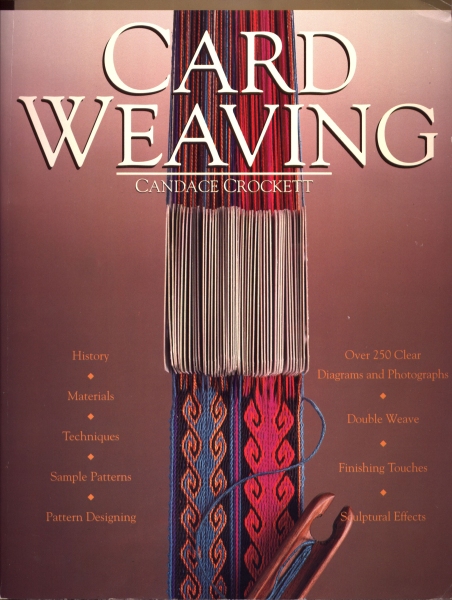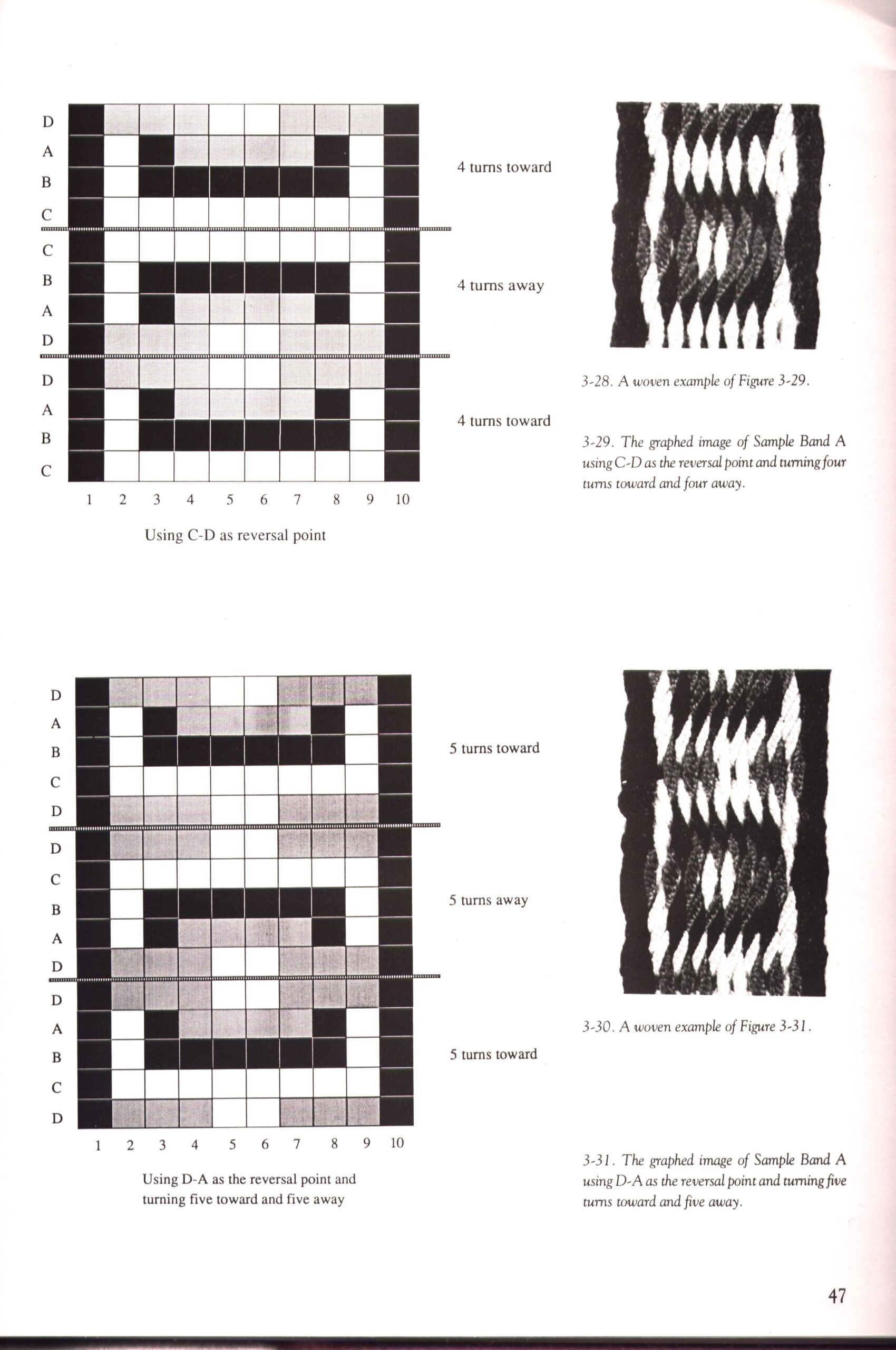Interweave Press, 1991
ISBN 0-934026-61-0
first edition:
Watson-Guptill Publications, 1973
Both at the time this book was written and decades later, many tablet weaving related publications were rather specific, looking into a narrow topic (e.g. a particular technique or time period), and include only basic instructions for weaving itself. For years, online instructions were also rather general, saying something like “pick up the yarn and tablets and start weaving, everything will be great!”. If you need much more clear and simple instructions, Crockett’s book is for you. It is a classic textbook that takes you by the hand and leads you from your first steps in weaving to freedom of creating your own patterns.
Candace Crockett is an art professor at San Francisco State University. She has published several books on various textile techniques, including weaving and spinning, and her own textile creations can be found in museums, galleries and private collections. In 1976, after tablet weaving book had been published, she released a video cassette with weaving instructions – I wonder if that was one of the first ever video instructions for tablet weaving.
“Card Weaving” is considered to be among the best beginner’s books on the subject. It has helped to get on track quite a number of weavers whose names are well known in the community. The book has received its share of throughout positive reviews, so it’s quite difficult to resist buying one for your library. It does have downsides, of course, but let’s start on the bright side.
“Card Weaving” is a classic, traditional textbook in the most academic sense (see here for table of contents in pdf). You can read it through from beginning to end, just scanning through the practical instructions, or you can read it and weave at the same time, moving step by step from simple patterns and structures to more complex ones. There is only one purely theoretical section, which is the introduction, the rest is mostly practical descriptions, diagrams and instructions. Since the book is intended for modern readers who are not necessarily into history, one of its main messages is about using an ancient technique to create modern masterpieces.
As mentioned, the introduction gives a general overview of the technology and its origins, as well as its development in various locations, starting from ancient Egypt and up to return of a wider interest towards it in the 19th century inspired by research by Margaret Lehmann-Files. There’s not a lot of specific information on surviving historical items, however the section is rather richly illustrated. The photographs are black and white, but of fairly good quality, covering completely different techniques, periods and geographical areas. A good photo of the Ramses belt should be noted separately, as this is the item that researchers have argued about for several decades.
The short second section of the book describes necessary devices and includes real-life-size images of tablets of different shape to use as stencils for your first tablets. In the next section, the simplest weaving variations are shown and described in detail, starting with the correct threading and tablets’ correct position. The simplest patterns are shown on drawings and photos, with step-by-step weaving instructions added. Most usual mistakes and how to correct them are also described. Everything is made very clear.
Next sections help you understand weaving patterns and inner workings of weaving by showing how pattern drawings correspond with actual bands. This is extremely useful if you are willing to learn how to create your own patterns. However techniques are arranged in an odd order that has nothing to do with the techniques’ complexity (i.e. examples are not sorted from simplest to hardest). For some techniques, descriptions are really good, while for others there’s only a diagram and minimal instructions. Quite a lot of attention is paid to the use of contrasting colors to create not only patterns, but also nice structures.
Separate section of the book takes you through less usual tablets manipulations like adding warp threads to create a widening band, or adding embellishments. The last section provides options for nice finishing techniques, and gives inspiration for how to put your weaving to use, including creating rather big (clothing) items from it. The last message of the book is hard not to agree with: the journey of tablet weaving is an exciting and inspiring one.
A disadvantage of the book is Crockett’s own pattern marking system, that is similar to most common systems in some places and is drastically different in others. Once you put it all together, it’s fine, but there can be a bit of confusion at the start. Also, practical instructions are not always presented in connection with specific pattern types, so if you don’t have enough experience (and if you need a textbook, you probably don’t) you might need to go through the book guessing.
To summarise, the book by Crockett is a proper contemporary textbook on tablet weaving that helps you build a strong foundation of the weaving skills, and gives some hints of the opportunities of the technique. It’s easy to learn the basics from, but it’s not the book you would come back to again and again over the years, maybe only to look at a photo of some historical item.


